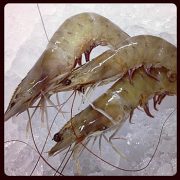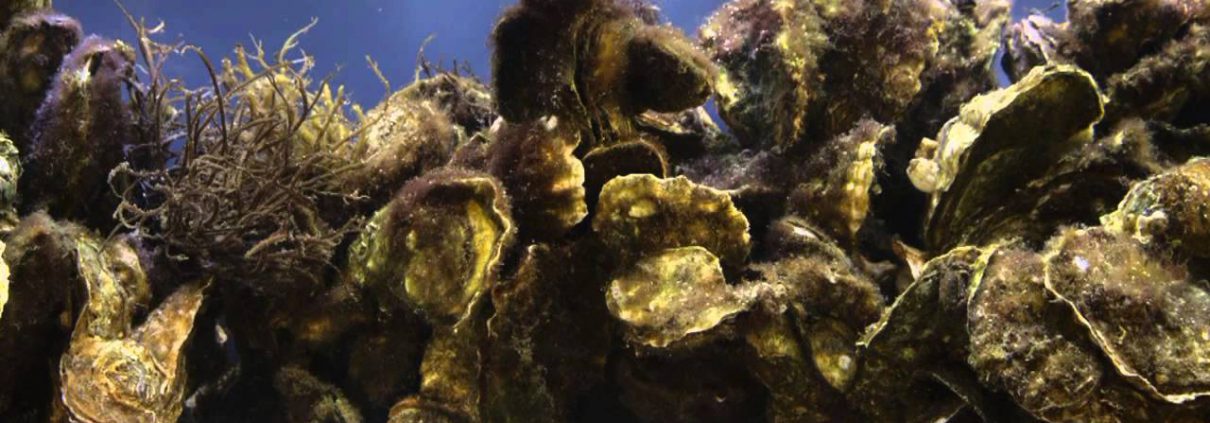FEDERAL FUNDING LEVERAGES EXISTING STATE APPROPRIATIONS
The North Carolina Coastal Federation has been recommended to receive $1.275 million for oyster restoration in the Pamlico Sound by the National Oceanic and Atmospheric Administration, with the potential to receive a total of $4.275 million over a three-year period.
NOAA announced Wednesday the 17 coastal and marine habitat restoration projects it is recommending to receive $9 million in grants from its Community-based Restoration Program. The federation is recommended for the largest grant out of the 17 recipients.
The grant, titled the Landscape-Scale Oyster Restoration to Benefit Four Managed Species in the Pamlico Sound, will provide $1.275 million toward oyster reef construction in the first year and a potential $1.5 million in each of the next two years.
“North Carolina has the potential to be the ‘Napa Valley’ of oysters, and the investment by both the state and federal agencies will help realize that goal within the next 10 years,” said Todd Miller, the federation’s executive director.
This funding leverages existing state appropriations to increase the acres of reef restored in North Carolina’s sounds. This year the state legislature, with encouragement from senators Harry Brown, Brent Jackson, Bill Cook and Norman Sanderson and representatives Pat McElraft, Chuck McGrady and Paul Tine, appropriated $1.33 million for oyster restoration efforts in the state. The federal grant doubles the total funds available for oyster restoration in the next year to $2.6 million.
Cook pointed out that even though North Carolina has the second largest estuary system in the nation, 75 percent of oysters consumed in the state are imported.
“The shellfish cultivation industry in North Carolina can, and will, be a much larger part of our economy thanks to investments by the General Assembly during the last two fiscal years,” he said. “The ongoing efforts of the federation, and their partnership with NOAA, also should be applauded as they represent yet another critical step to ensure an ongoing, long-term commitment for oyster habitat restoration in our state.”
At this point in the selection process, the application approval and obligation of funds is not final. Each of the 17 applications is being “recommended” and is not guaranteed funding. Final approval is subject to funding availability as well as final review and approval by both the NOAA Grants Management Division and Department of Commerce Federal Assistance Law Division.
Through the NOAA project, at least 15 acres of oyster reef will be created each year, with a total of 45 acres by the end of the three year period. The federation, N.C. Division of Marine Fisheries and other partners, including private contractors, will be able to create new oyster habitats, improve the water quality in the Pamlico Sound and spur economic development by creating jobs.
“Because of this public-private partnership, we are basically going to double our oyster restoration efforts,” said Steve Murphey, chief of the Habitat and Enhancement Section for the N.C. Division of Marine Fisheries.
 Oyster reefs are designated as essential fish habitat for at least 26 species of fish, including red drum, brown shrimp, white shrimp and pink shrimp, also known as spotted shrimp — all of which are important to North Carolina’s commercial fisheries.
Oyster reefs are designated as essential fish habitat for at least 26 species of fish, including red drum, brown shrimp, white shrimp and pink shrimp, also known as spotted shrimp — all of which are important to North Carolina’s commercial fisheries.
Oyster restoration also leads to economic benefits. They provide habitat for crabs and finfish, which bring in more than $62 million annually to the North Carolina economy. It is estimated that each year for every acre of reef created, an additional $1,600 in commercial landings of finfish and crustaceans is produced.
The federation works to create oyster reefs throughout the coast, educates the public about the importance of oysters and also took the lead in developing a five year blueprint for oyster restoration efforts in the state, titled the Oyster Restoration and Protection Plan for North Carolina: A Blueprint for Action 2015-2020. The State of the Oyster: 2015 Progress Report outlines what was accomplished in 2015 and the work that needs to be done to meet the goals listed in the blueprint.



